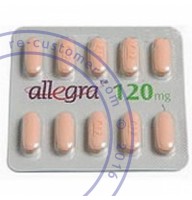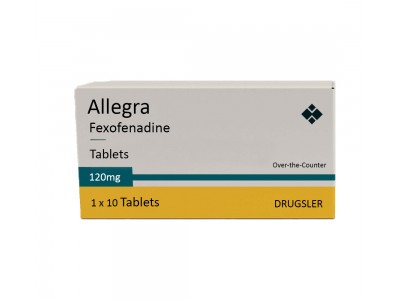Allegra, a brand name for the drug fexofenadine, is an antihistamine used to treat various allergic conditions. Its primary function is to block the action of histamine, a substance produced by the body during allergic reactions. In this article, we will explore the many uses of Allegra fexofenadine, from seasonal allergies to more specific conditions like hay fever and hives treatment.
What is Allegra (Fexofenadine)?
Allegra is an over-the-counter medication commonly used to treat the symptoms of allergies. It contains the active ingredient fexofenadine, which works by blocking the effects of histamine, thus reducing allergic symptoms such as sneezing, runny nose, and itching. Fexofenadine is considered a second-generation antihistamine, meaning it is less likely to cause drowsiness compared to first-generation antihistamines.
Uses of Allegra in Disease Treatment
Allegra is widely used to treat a variety of conditions, most commonly related to allergic reactions. The drug is especially effective for seasonal allergies, which occur when the immune system overreacts to allergens in the environment. This may include pollen, dust, or mold spores. In these cases, Allegra for hay fever is particularly beneficial, as it helps alleviate symptoms such as sneezing, runny nose, and itchy eyes.
Allegra for Nasal Congestion
Another common use for Allegra for nasal congestion is in patients suffering from allergic rhinitis. This condition causes inflammation in the nasal passages, leading to congestion, sneezing, and a runny nose. Allegra works by reducing this inflammation and providing relief from nasal symptoms.
Effectiveness in Treating Skin Conditions
Fexofenadine is also effective in treating skin conditions such as itching and rashes, particularly those caused by allergies. Allegra treatment for skin rash helps reduce redness, swelling, and discomfort associated with allergic reactions on the skin. It is commonly prescribed for conditions like hives treatment, where patients experience red, itchy welts on the skin.
Comparison with Other Antihistamines
When comparing fexofenadine vs loratadine for allergies, both medications are effective antihistamines. However, fexofenadine is often preferred for patients who are sensitive to drowsiness, as it has a lower sedative effect compared to loratadine. Both drugs are non-drowsy options, but individual response may vary.
Allegra and Its Side Effects
While fexofenadine for rhinitis and other allergic conditions is generally well-tolerated, it is important to be aware of potential side effects. Some individuals may experience headaches, dizziness, or dry mouth. It is recommended to take the medication as directed and avoid exceeding the prescribed dosage to minimize side effects.
How to Take Allegra (Fexofenadine)
Allegra should be taken according to the instructions provided by your healthcare provider or as indicated on the package. It is usually recommended to take Allegra fexofenadine for allergies once a day, with or without food. Patients are advised to avoid taking the medication with fruit juices, as they may interfere with its absorption.
Conclusion
In conclusion, Allegra fexofenadine uses extend beyond just treating seasonal allergies. It is also an effective solution for conditions like hay fever, hives treatment, and nasal congestion. Whether used for fexofenadine for rhinitis or as a remedy for skin reactions, Allegra offers relief from a variety of allergic symptoms. Always consult with your healthcare provider before starting a new medication to ensure it is right for you.

